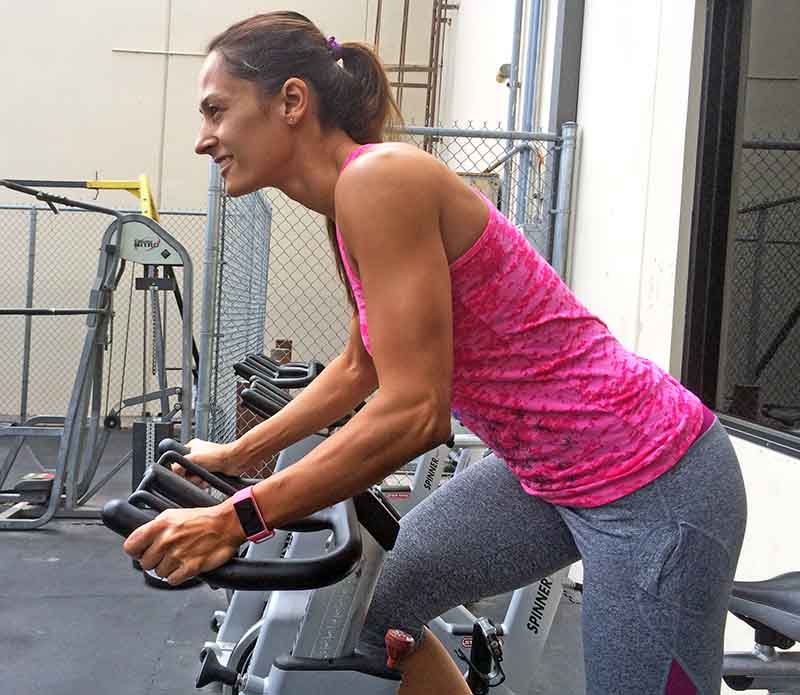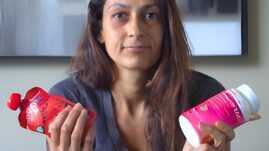Few things are more frustrating than having to stop your workout to treat a low (or high) blood sugar. It can be absolutely “I want to cry and throw a tantrum” frustrating!
The good news is that it’s possible to prevent most of these episodes. It takes practice, a lot of trial and error, and the right knowledge, but it can be done!
With practice, you should be able to go for a run or take a Zumba class without having to fear hypoglycemia (low blood sugars) or “carb up” beforehand. You should also be able to do a hardcore interval training class without seeing your blood sugar go through the roof.

I am not saying that you will never go low during a workout again after reading this post. I teach people with diabetes how to work out safely and effectively for a living, and I still have to cut a workout short because of my blood sugar sometimes. What I am saying is that if you implement everything you are about to read, you should soon have the confidence to never let your diabetes hold you back from exercising and living an active and healthy lifestyle.
This post is designed to be almost like a table of contents. Covering every aspect of exercising with diabetes is not possible in a single post, so each section of this post includes a link to more in-depth “how-to” information on managing your blood sugar. I suggest that you follow each link when you get to it, read the “how to” post, and then come back here.
It’s a lot of information (more than most people, myself included, can read or digest in one sitting), so just take it slow and think about how you can use each piece of information to optimize your diabetes management routine around workouts. You can always bookmark this post and refer back to it later.
Now, let’s get started!
Managing your blood sugar during steady-state cardio
When you do steady-state cardio, your heart rate is elevated and stays at about the same level throughout your workout. Examples of steady-state cardio are brisk walking, running or jogging in flat terrain or on a treadmill, biking on an exercise bike, and running on an elliptical machine.
For most people living with diabetes and taking insulin or type 2 drugs like Amaryl or Prandin (the sulfonylureas and meglitinides classes of drugs), steady-state cardio will lower their blood sugar and increase the risk of exercise-induced hypoglycemia so medication doses will have to be adjusted accordingly.
If you do less than 60 minutes of steady-state cardio, you generally don’t need to eat additional carbs to compensate for the workout if you have adjusted your insulin correctly. The trick is to plan ahead and adjust your insulin and food in good time before the workout.
For a detailed description of how to manage your blood sugar during steady state cardio, read the article “How to Prevent Low Blood Sugar during Cardio Workouts” by type 1 diabetic and triathlete champion Cliff Scherb (and be ready to take notes, this is good stuff!).
The advice in the link above is primarily for people using insulin. If you take other blood glucose-adjusting medications, please discuss medication adjustments with your medical team before starting a workout routine.

Managing your blood sugars during interval training
If you’re into boot camp classes, CrossFit, or similar types of workouts, you may have experienced that your blood sugars start spiking halfway through your workout, or maybe even right after. This type of cardio, where your heart rate goes from low to extremely elevated and back again several times during the workout, is called interval training.
The reason for the increase in blood sugar is that the improved insulin sensitivity from exercising is surpassed by your body’s glucose production. Your body is producing glucose faster than you can use it!
Completing an interval cardio session just to take more insulin to get your blood sugar down again can seem counterintuitive if you’re looking to lose weight, but that’s not necessarily the right way to think about it. Although you may have to correct an increase in your blood sugar during or right after your workout, that correction is not due to extra calorie consumption, so it doesn’t impact your daily calorie budget. Assuming you don’t overcorrect, the extra insulin won’t lead to weight gain. I like to think of it as glucose recycling.
You can read more about the science behind interval training and blood sugar in my post “Why Some Types of Exercise Can Make Your Blood Sugar Increase”.
Because I know that interval training won’t lower my blood sugar, I don’t reduce my insulin before an interval workout. I may even take a little extra insulin if my blood sugar is at the high end of my range before the workout.

Finding your exercise and diabetes formula
We all have different insulin sensitivities and we react differently to various types of exercise. The general rules described above (steady state cardio will lower your blood sugar while interval workouts won’t) apply to most people, but to successfully manage your diabetes when exercising, you need to find the specific formula for food and insulin (or type 2 drugs) that works for you.
To limit the risk of high or low blood sugars as a result of exercise, you have to do the upfront work and figure out your patterns. It’s not that hard, but it does take some time and dedication. I’ve written a detailed guide on “How to Find Your Formula for Insulin and Food Around Workouts” that I suggest you read and follow.
Basically, finding your formula comes down to:
- Reducing the number of variables
- Testing your blood sugar often
- Taking detailed notes and analyzing the results
You can use the Blood Glucose Tracker in the post I linked to above to log your workouts, food, and medication, so you can start finding your patterns and the formula that works for you!
Most importantly, you have to accept that you won’t get it right every time. There is no such thing as “perfect” diabetes management. This means that every time you start something new, you have to adjust (not restart) your formula. But trust me, the upfront work and the occasional missteps are worth it. Imagine walking into a gym or going for a run knowing that you got this (with glucose tabs in your pocket, just to be safe). It’s a good feeling 😀
Now, let’s do this!
Suggested next post: How Resistance Training Affect Your Blood Sugar




Nathan Johnson
I’m just doing research on this. I lost 128lbs and beat diabetes in the first month of it taking me 13 months to lose it . I was fine then I gained 30lns back and now I don’t have sugar spikes but recently sugar lows for doing the smallest of exercise . My doctors ain’t helping much . Ugh I want to lose the weight again but I can’t eith these sugar dips
Christel Oerum
If you’re not taking any diabetes medication and you’re seeing deep dips in blood sugars (below 70 mg/dL) all you can really do is eat 1-2 glucose tabs to bring you back up. That’s only 30 calories of sugar so shouldn’t derail your weight loss journey. If you do take medication you should talk to your doctor about reducing it